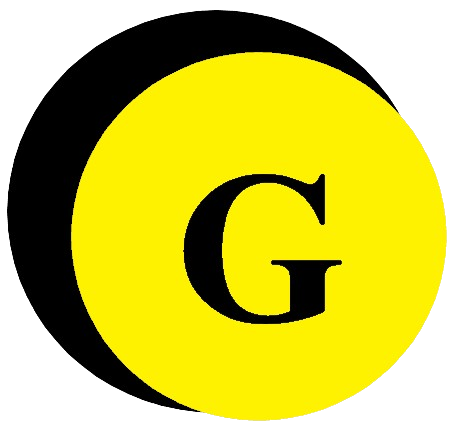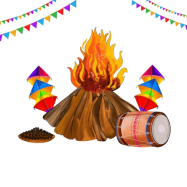Lohri: Difference between revisions
No edit summary |
No edit summary |
||
| Line 27: | Line 27: | ||
* The '''people of Sindhi community''' observe this festival as '''“Lal Loi”'''. | * The '''people of Sindhi community''' observe this festival as '''“Lal Loi”'''. | ||
== History == | |||
European visitors, including '''Wade in 1832''' and '''Captain Mackeson in 1836''', documented the observance of Lohri at the Lahore durbar of Maharaja Ranjit Singh, noting the distribution of rewards and the tradition of lighting a significant bonfire, with references to the continued celebration in the royal court as late as 1844. | |||
The Lohri celebration, rooted in the '''folklore of ancient Himalayan communities''', signifies the joyous commemoration of the increasing daylight following the winter solstice, traditionally observed through communal bonfires by Hindus and Sikhs to mark the transition toward longer days after the '''Rabi season'''. It celebrates the days getting longer as the sun proceeds on its northward journey. The day after Lohri is celebrated as '''Makar Sankranti'''.<ref>Wikipedia | https://en.wikipedia.org/wiki/Lohri</ref> | |||
Lohri is considered to have been derived from the word '''“Loi”''', who was the wife of kabir, the great saint. While some people believe that it originated from the word '''“Loh'''” which is a device used for making chapattis. In some parts of the state people also believe that the festival’s name originated from the '''name of the sister of Holika''', who survived the fire while Holika herself died. Besides that, some people also believe that that the word Lohri originated from the '''word tilorhi''' which comes from the combination of the words rorhi and til.<ref>Utsav Govt Site |https://utsav.gov.in/view-event/lohri-festival-1</ref> | |||
== Celebrations == | |||
It is believed that the '''festival is celebrated on the day when days start becoming shorter and the nights start becoming longer'''. This festival is celebrated as the '''harvest festival.''' On this day people light bonfire, sing songs and dance in joy to pay respect to the '''Dulha Batti'''. | It is believed that the '''festival is celebrated on the day when days start becoming shorter and the nights start becoming longer'''. This festival is celebrated as the '''harvest festival.''' On this day people light bonfire, sing songs and dance in joy to pay respect to the '''Dulha Batti'''. | ||
People wear colorful and bright clothes and all come together and enjoy dancing in '''Gidda and Bhangra'''. Punjabi songs are sung, and everybody rejoices. '''Sarson da saag with makki di roti''' is usually served as the main course at a Lohri dinner. | People wear colorful and bright clothes and all come together and enjoy dancing in '''Gidda and Bhangra'''. Punjabi songs are sung, and everybody rejoices. '''Sarson da saag with makki di roti''' is usually served as the main course at a Lohri dinner. | ||
== | == Significance of Festival == | ||
* '''Harvest Festival''': Lohri is primarily a celebration of the harvest of rabi crops, particularly sugarcane. Farmers celebrate the bountiful harvest by lighting bonfires, which symbolize the warmth and the energy of the sun. It is a way to express gratitude for the crops and pray for a prosperous year ahead. | |||
* '''Winter to Spring Transition''': Lohri marks the end of the winter season and the beginning of the longer, warmer days of spring. The festival signifies the triumph of light over darkness, warmth over cold, and new beginnings. | |||
* '''Cultural Significance''': The festival is celebrated with music, dance (especially Bhangra and Gidda), and traditional foods like til (sesame seeds), jaggery, and popcorn. People gather around bonfires, singing folk songs and offering offerings such as sesame seeds, sugarcane, and rewaries (a type of sweet). | |||
* '''Religious Significance''': Lohri is also associated with the worship of the fire and the Sun God. It is believed that the bonfire helps to purify the atmosphere and brings blessings for the new season. | |||
* '''Symbol of New Beginnings''': The festival is also associated with the hope of new beginnings and prosperity. It is often celebrated by families, especially newlyweds or families with newborns, as a way to usher in good fortune. | |||
== References == | == References == | ||
Revision as of 04:05, 13 January 2025
Lohri is the festival celebrated every year on 13th January. It is believed that the festival is celebrated on the day when days start becoming shorter and the nights start becoming longer. This festival is celebrated as the harvest festival. Read more in detail.
About Lohri
- The festival Lohri is celebrated every year on 13th January.
- This festival is Popular winter folk festival celebrated primarily in Northern India.
- It is observed or celebrated in the night before Makar Sankranti. The date of Lohri changes every 70 years.
- The official holiday is given in Punjab, Himachal Pradesh and Jammu & Kashmir. It is celebrated in other states also such as Haryana, Delhi and more but is not gazetted or official holiday.
- Festival is celebrated by all religions such as Sikhs, Hindus and others.
- Usually comes in the month of Paush or Magh.
- The people of Sindhi community observe this festival as “Lal Loi”.
History
European visitors, including Wade in 1832 and Captain Mackeson in 1836, documented the observance of Lohri at the Lahore durbar of Maharaja Ranjit Singh, noting the distribution of rewards and the tradition of lighting a significant bonfire, with references to the continued celebration in the royal court as late as 1844.
The Lohri celebration, rooted in the folklore of ancient Himalayan communities, signifies the joyous commemoration of the increasing daylight following the winter solstice, traditionally observed through communal bonfires by Hindus and Sikhs to mark the transition toward longer days after the Rabi season. It celebrates the days getting longer as the sun proceeds on its northward journey. The day after Lohri is celebrated as Makar Sankranti.[1]
Lohri is considered to have been derived from the word “Loi”, who was the wife of kabir, the great saint. While some people believe that it originated from the word “Loh” which is a device used for making chapattis. In some parts of the state people also believe that the festival’s name originated from the name of the sister of Holika, who survived the fire while Holika herself died. Besides that, some people also believe that that the word Lohri originated from the word tilorhi which comes from the combination of the words rorhi and til.[2]
Celebrations
It is believed that the festival is celebrated on the day when days start becoming shorter and the nights start becoming longer. This festival is celebrated as the harvest festival. On this day people light bonfire, sing songs and dance in joy to pay respect to the Dulha Batti.
People wear colorful and bright clothes and all come together and enjoy dancing in Gidda and Bhangra. Punjabi songs are sung, and everybody rejoices. Sarson da saag with makki di roti is usually served as the main course at a Lohri dinner.
Significance of Festival
- Harvest Festival: Lohri is primarily a celebration of the harvest of rabi crops, particularly sugarcane. Farmers celebrate the bountiful harvest by lighting bonfires, which symbolize the warmth and the energy of the sun. It is a way to express gratitude for the crops and pray for a prosperous year ahead.
- Winter to Spring Transition: Lohri marks the end of the winter season and the beginning of the longer, warmer days of spring. The festival signifies the triumph of light over darkness, warmth over cold, and new beginnings.
- Cultural Significance: The festival is celebrated with music, dance (especially Bhangra and Gidda), and traditional foods like til (sesame seeds), jaggery, and popcorn. People gather around bonfires, singing folk songs and offering offerings such as sesame seeds, sugarcane, and rewaries (a type of sweet).
- Religious Significance: Lohri is also associated with the worship of the fire and the Sun God. It is believed that the bonfire helps to purify the atmosphere and brings blessings for the new season.
- Symbol of New Beginnings: The festival is also associated with the hope of new beginnings and prosperity. It is often celebrated by families, especially newlyweds or families with newborns, as a way to usher in good fortune.
References
- ↑ Wikipedia | https://en.wikipedia.org/wiki/Lohri
- ↑ Utsav Govt Site |https://utsav.gov.in/view-event/lohri-festival-1

